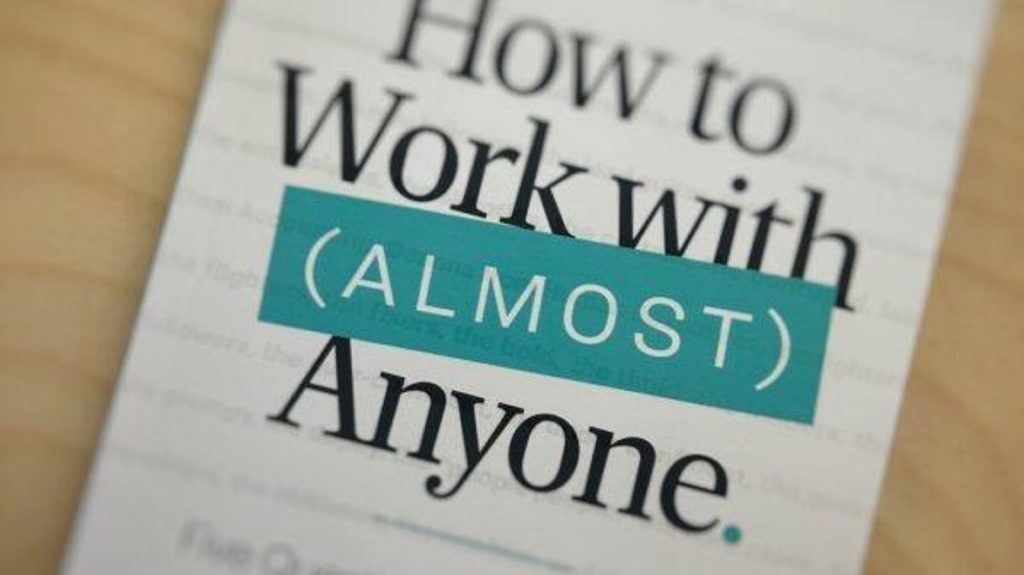“People are messy and complicated, so all relationships are bound to become suboptimal at some point.”
While a bit unconventional to appear at the start of a book about cultivating optimal relationships, this statement is a cornerstone of author Michael Bungay Stanier’s philosophy. He believes acknowledging this reality is critical to nurturing relationships proactively, allowing for the navigation of inevitable ups and downs without damaging the relationship itself.
The BPR
In his latest book, How to Work with (Almost) Anyone, Bungay Stanier identifies three essential attributes of a BPR (best possible relationship).
The first is safety. Both parties must feel safe enough to share their ideas and, likewise, to raise any issues or grievances.
Secondly, the relationship must be vital. There must be an element of energy or excitement in the relationship. Bungay Stanier defines this as “A willingness to push each other, step to the edge, and explore the boundaries.”
The third and final characteristic is repairability. This aspect, Bungay Stanier believes, doesn’t come naturally to most people. He notes, “There is often a general self-healing that happens through time and necessity… but my working theory is they [the relationships] never quite get back to as good as they used to be.”
From Bungay Stanier’s experience, to mend a relationship when things go awry, three actions need to occur:
First, you must be brave enough to speak up when you are hurt. While this can be difficult, laying it on the table and articulating how it affected you is necessary.
Second, both parties need to be proactive in looking for damage. Bungay Stanier suggests asking team members, “What needs to be said that hasn’t yet been said?” This provides them with an opportunity to reveal any harm. He also recommends checking if team members are okay and to detect any tension or discomfort. Both strategies create space for a conversation about the issue.
And third, you need to become adept at apologizing. This means taking responsibility for your mistakes—even if they were unintentional. Bungay Stanier posits, “If you can become really good at knowing how to apologize with sincerity and with heart, that is a really powerful gift to the relationship.”
Questions That Foster the Best Possible Relationship (BPR)
1) What is your best?
The first question is what Bungay Stanier refers to as the “amplify question.” Its purpose is to comprehend when you excel and what type of work fulfills you. This goes beyond merely identifying your strengths and reaches the core of what work triggers your flow state and when you shine in the eyes of others.
Bungay Stanier observes, “There will be tasks that you are both good at and fulfilled by, but there’s also stuff that you’re good at and not fulfilled by. You can probably think of some stuff that you’re good at and really, really wish people would stop giving to you.”
2) Talk about the good bits of a highly functioning working relationship. What did the other person do that made the relationship great? How did you contribute to the relationship being great?
Discuss the positive aspects of a highly functioning working relationship. What did the other person do that made the relationship great? How did you contribute to the relationship being great?
As Bungay Stanier wisely put it, “Your patterns from your past will repeat again in the future.”
Discussing previous rewarding working relationships can be beneficial in defining what elements constitute a great relationship in your eyes. Discuss both things that were said and those that were not, as both can have an equal impact on a relationship.
3) Talk about the frustrating bits of a working relationship. What did the other person do that drove you up the wall? How did you contribute to the dysfunction?
Bungay Stanier offers a cautionary note: “The temptation is to point the finger at the other person, but what’s really interesting is to share what your role was in the dysfunctional relationships.”
This dialogue helps identify how you can inadvertently hinder working relationships, how you respond under stress, and how you may sabotage dynamics. It is about arming both of you with the knowledge to prevent these situations from recurring.
In Summary
Bungay Stanier believes the questions he poses in the book and his overall recommendations about working relationships are beneficial, regardless of the seniority of the individuals involved. The process can be implemented successfully between colleagues on an equal footing, initiated by a leader with a team member, or even by a team member approaching their leader.
However, he does emphasize that leaders should understand that creating a safe environment is particularly important in their relationships with team members. It is something he practices in his own company, which is why he often asks his team, “What needs to be said that hasn’t yet been said?”
He elaborates, “When I’m talking to people who work for me, it’s hard for them to address the things that are going wrong. So, I give them permission to open space for them to mention the difficult thing, the awkward thing, or the slightly hurtful thing. We can pre-emptively do that.”
If you aim for the best possible relationship with others, Michael Bungay Stanier’s How to Work with (Almost) Anyone is a resource you should not overlook. Five stars.
Watch the full interview with Michael Bungay Stanier and Dan Pontefract on the Leadership NOW program below, or listen to it on your favorite podcast.
_______
Pre-order my next book, publishing in November, Work-Life Bloom: How to Nurture a Team That Flourishes, (You won’t want to miss digging in.)
Read the full article here










